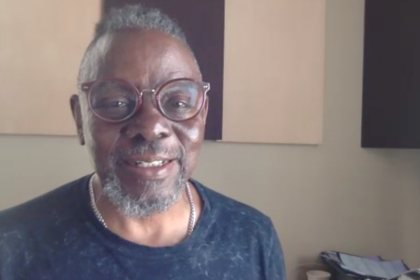The flickering gaslights in a 1944 film gave birth to what would become one of the most insidious forms of emotional abuse recognized today. In the classic thriller “Gaslight,” Ingrid Bergman portrays Paula, a woman whose husband systematically manipulates her perception of reality until she begins questioning her own sanity. What started as cinematic storytelling has evolved into a recognized pattern of behavior that affects countless relationships worldwide.
When reality becomes a moving target
The manipulation tactic known as gaslighting has moved far beyond romantic relationships, seeping into workplaces, families, and friendships. This form of psychological manipulation occurs when someone systematically alters another person’s perception of reality, leading to a profound disconnect between what the victim experiences and what they’re told is true.
In professional settings, the impact can be particularly devastating. Research shows that minorities and women often face heightened vulnerability to gaslighting in workplace environments, where their lived experiences may be consistently invalidated or dismissed. This creates a double burden: managing both the manipulation itself and the broader societal patterns that enable it.
The master manipulator’s playbook
Gaslighters employ sophisticated tactics that evolve over time, making their behavior increasingly difficult to identify and counter. They begin with subtle dismissals that seem harmless but gradually escalate into more severe forms of reality distortion.
A primary strategy involves undermining confidence. The manipulator might consistently question their target’s memory of events, leading to statements like “That conversation never happened” or “You’re remembering it wrong again.” This persistent doubt-casting creates a foundation of uncertainty that makes future manipulation easier.
Reality distortion often extends to emotional invalidation. When confronted about hurtful behavior, gaslighters deflect responsibility by attacking the victim’s emotional response. They might label genuine hurt as oversensitivity or dismiss valid concerns as irrational reactions, creating a cycle of self-doubt that can take years to break.
The invisible chains of emotional bondage
The relationship between gaslighter and victim often resembles a complex dance of control and dependency. Manipulators excel at identifying and exploiting vulnerabilities, using past traumas or insecurities as leverage to maintain their position of power.
They frequently employ love as a weapon, connecting their manipulative behavior to expressions of care. This toxic mixing of abuse with affection creates a confusing emotional landscape where victims struggle to separate genuine care from manipulation. Statements like “I’m only saying this because I love you” become tools of control rather than expressions of genuine concern.
The ripple effect of sustained manipulation
Long-term exposure to gaslighting creates deep psychological wounds that extend far beyond the immediate relationship. Victims often develop a persistent uncertainty about their judgment that affects all aspects of their lives, from personal relationships to professional decisions.
The manipulation can lead to isolation as victims gradually withdraw from friends and family who might otherwise help them recognize the abuse. This isolation serves the gaslighter’s purposes, removing external perspectives that could challenge their reality distortion.
Breaking free from the fog
Recognizing gaslighting represents the first step toward recovery, but the journey to healing involves multiple stages. Understanding these stages helps victims navigate their path to freedom:
First comes awareness – the gradual recognition that one’s reality is being manipulated. This often begins with a gut feeling that something isn’t right, even when the manipulator insists otherwise.
Next is documentation – keeping detailed records of interactions, conversations, and incidents. This creates an objective reference point that helps counter the gaslighter’s attempts to rewrite history.
Then comes connection – reaching out to trusted friends, family members, or mental health professionals who can provide external validation and support.
Finally, there’s action – making concrete plans to either confront the behavior or leave the relationship, depending on the situation’s safety and severity.
Rebuilding trust in yourself
Recovery from gaslighting requires rebuilding trust in one’s own perceptions and judgments. This process takes time and often benefits from professional support. Mental health professionals recommend several strategies for healing:
Mindfulness practices help victims reconnect with their immediate experiences and emotions, countering the dissociation that often develops as a survival mechanism.
Boundary-setting exercises allow survivors to practice identifying and enforcing their limits, rebuilding confidence in their right to maintain personal boundaries.
Reality-testing techniques provide practical tools for distinguishing between genuine self-doubt and manipulated uncertainty.
Creating a gaslighting-resistant future
Prevention becomes crucial after escaping a gaslighting situation. This involves developing skills to identify manipulation early and maintain strong boundaries in all relationships.
Understanding the difference between healthy disagreement and reality distortion helps survivors navigate future relationships more safely. While people may naturally remember events differently, persistent patterns of denial and reality manipulation signal potential gaslighting.
The path forward
Recovery from gaslighting marks the beginning of a new chapter focused on self-trust and healthy relationships. Many survivors find that their healing journey enables them to help others recognize and escape similar situations.
The National Domestic Violence Hotline remains available around the clock for those seeking support or guidance in navigating manipulative relationships. Local mental health resources and support groups also provide valuable assistance for those working to rebuild their lives after gaslighting.














